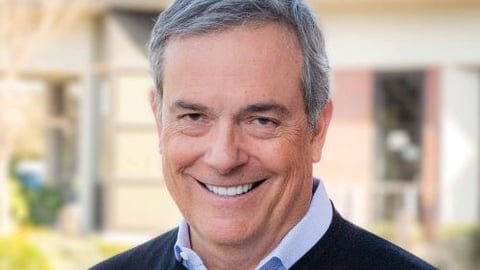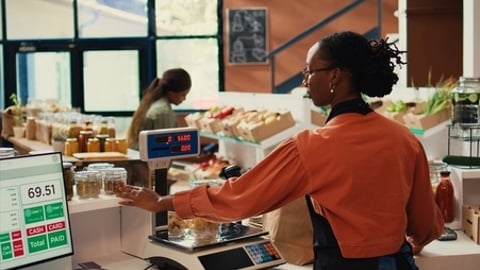H-E-B Ranked Top U.S. Grocer by dunnhumby Retailer Preference Index
According to customer data science provider dunnhumby’s eighth annual Retailer Preference Index (RPI), H-E-B is the top U.S. grocery retailer for the fourth time in eight years. The Texas supermarket chain has held the RPI’s top spot for three of the past four years, which dunnhumby attributed to the grocer’s long-term customer value proposition. Market Basket (No. 2), Costco (No. 3, as well as No. 1 in the Canadian RPI), WinCo Foods (No. 4) and ALDI (No. 5) made up the rest of the top five.
The RPI also found that “saving customers money” – via price, promotions and rewards – is the most important predictor for retailers to have stronger, long-term market success in the United States. This pillar has been increasing in importance over the last eight years, with 38% of a retailer’s long-term success now based on their price, promotions, and rewards proposition, the highest percentage in the history of the RPI. dunnhumby’s five pillars of the customer value proposition are: 1) price, promotions and rewards; 2) quality; 3) digital; 4) operations; and 5) speed and convenience.
“Since releasing the first U.S. Grocery RPI eight years ago, retailers and shoppers have weathered COVID, supply chain disruptions, agricultural shortages due to climate impacts, and a prolonged period of high food inflation that have reshaped shopping behavior and how Americans perceive the grocery retail environment,” noted Matt O’Grady, president of the Americas at Cincinnati-based dunnhumby. “Clients across the grocery retail sector understand that market success is dependent upon saving shoppers money and implementing innovative pricing technologies to maintain their customer base.”
Key findings from the study include:
- Three of the top four retailers – H-E-B, Market Basket and WinCo – are regional supermarkets, with the 15 additional retailers in the first quartile made up of a cross-section of nontraditional, national banners in the club, discount, online and superstore channels.
- Retailers with stronger customer value propositions – shown by higher RPI rankings – grew up to 2.5 times faster over five years than retailers with lower RPI rankings.
- The battle for first place, waged from 2017 to 2022, has now become a battle for second. In the past three years, H-E-B has separated itself from the rest of the top five through its superior ability to deliver a combination of better savings, quality, shopping experience and assortment.
- Kroger and Albertsons banners experienced ranking declines, with particularly steep declines in states where there were continuing high-profile court cases related to their failed merger. Both King Soopers (a Kroger banner) and Albertsons decreased in many areas of the value proposition, which could be an effect of the merger news headlines.
- Amazon, the RPI’s top U.S. grocery retailer in 2021 and 2022, dropped out of the top three for the first time in eight years, ending up in the sixth spot. Part of this decline is because digital, the third most important pillar, fell from a 2023 high of 18.5% to 16% in 2024.
- Lidl and Trader Joe’s made meaningful gains in rankings in 2024. Lidl rose 14 spots to move into the top quartile for the first time, taking the 17th position. The deep discounter saw modest improvements in the areas of prices, digital and operations. This, combined with the uptick in importance of savings (its strength) and downtick in importance of quality (its weakness), accounted for the rise. Trader Joe’s, once top U.S. grocery retailer in the RPI, arrested its slide and improved its ranking from 15th place to eighth by being ahead of the market on quality while being about average at savings. Trader Joe’s, the second-highest- ranked retailer for quality, leads other quality-first retailers in savings perceptions.
“This year’s RPI shows that the fundamentals still apply, as H-E-B has proven year over year,” added O’Grady. “Any format can win. The first step is to understand your customers and how customers perceive you. Secondly, prioritize efforts to save your customers money that [are] consistent with your positioning. And finally, use the RPI as a framework to help you determine where you should invest and where you should make tradeoffs.”
The RPI, a comprehensive nationwide study that examines the approximately $1 trillion U.S. grocery market, is the only approach to ranking grocers that combines financial results with customer perception, including a survey of 11,000-plus U.S. consumers. Offering the dunnhumby Customer Data Science Platform, a mix of technology, software and consulting, the company employs more than 2,500 experts in offices throughout Europe, Asia, Africa and the Americas, working for such brands as Tesco, Coca-Cola, Meijer, and Procter & Gamble.
H-E-B, with sales of $43 billion, operates more than 435 stores in Texas and Mexico. Based in San Antonio, the multi-format retailer employs more than 160,000 associates and serves millions of customers in more than 300 communities. H-E-B is No. 15 on The PG 100, Progressive Grocer’s 2024 list of the top food and consumables retailers in North America.






